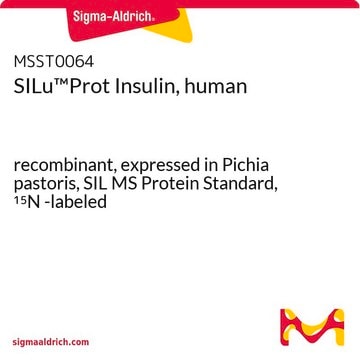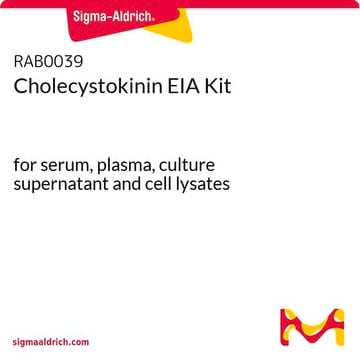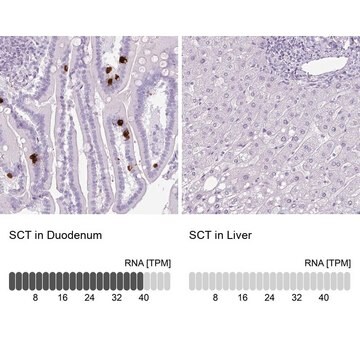C2581
Anti-Cholecystokinin (26-33) (CCK-8) antibody produced in rabbit
whole antiserum
Sinónimos:
CCK Antibody - Anti-Cholecystokinin (26-33) (CCK-8) antibody produced in rabbit, Cck Antibody
Seleccione un Tamaño
Seleccione un Tamaño
About This Item
Productos recomendados
origen biológico
rabbit
Nivel de calidad
conjugado
unconjugated
forma del anticuerpo
whole antiserum
tipo de anticuerpo
primary antibodies
clon
polyclonal
contiene
15 mM sodium azide
reactividad de especies
human
envase
antibody small pack of 25 μL
técnicas
competitive inhibition ELISA: 1:1000-1:2000
immunohistochemistry (formalin-fixed, paraffin-embedded sections): 1:8,000 using indirect immunoperoxidase staining of human stomach
Nº de acceso UniProt
Condiciones de envío
dry ice
temp. de almacenamiento
−20°C
modificación del objetivo postraduccional
unmodified
Información sobre el gen
human ... CCK(885)
Descripción general
Inmunógeno
Aplicación
- immunohistochemistry
- double-label immunofluorescence staining
- immunocytochemistry
- ELISA immunoassay
Acciones bioquímicas o fisiológicas
Cláusula de descargo de responsabilidad
¿No encuentra el producto adecuado?
Pruebe nuestro Herramienta de selección de productos.
Código de clase de almacenamiento
10 - Combustible liquids
Clase de riesgo para el agua (WGK)
nwg
Punto de inflamabilidad (°F)
Not applicable
Punto de inflamabilidad (°C)
Not applicable
Elija entre una de las versiones más recientes:
Certificados de análisis (COA)
¿No ve la versión correcta?
Si necesita una versión concreta, puede buscar un certificado específico por el número de lote.
¿Ya tiene este producto?
Encuentre la documentación para los productos que ha comprado recientemente en la Biblioteca de documentos.
Los clientes también vieron
Active Filters
Nuestro equipo de científicos tiene experiencia en todas las áreas de investigación: Ciencias de la vida, Ciencia de los materiales, Síntesis química, Cromatografía, Analítica y muchas otras.
Póngase en contacto con el Servicio técnico
![(Tyr[SO3H]27)Cholecystokinin fragment 26-33 Amide ≥97% (HPLC), powder](/deepweb/assets/sigmaaldrich/product/structures/125/021/32eb71ec-73e5-4cfc-94d0-ebcf5e784e39/640/32eb71ec-73e5-4cfc-94d0-ebcf5e784e39.png)








